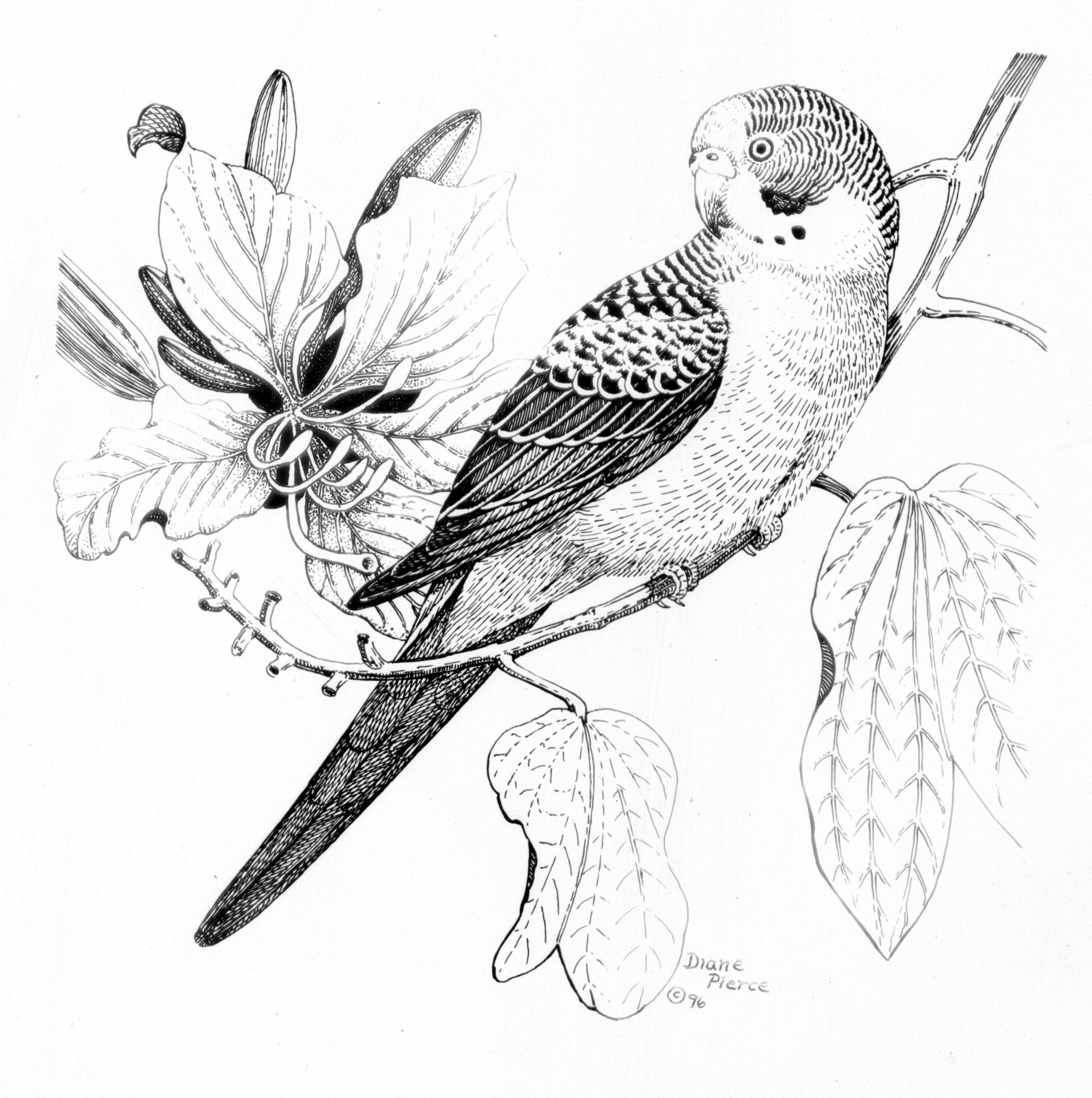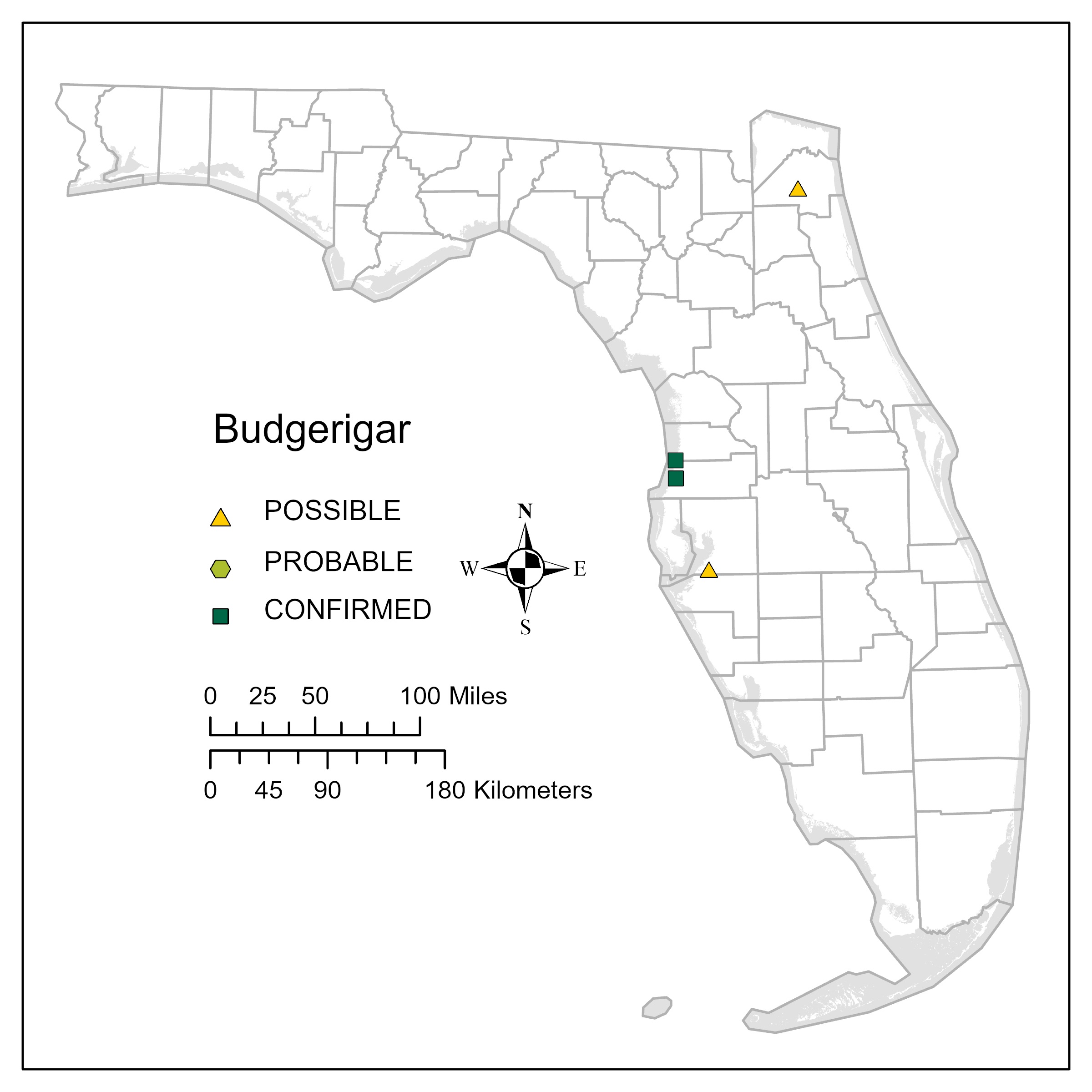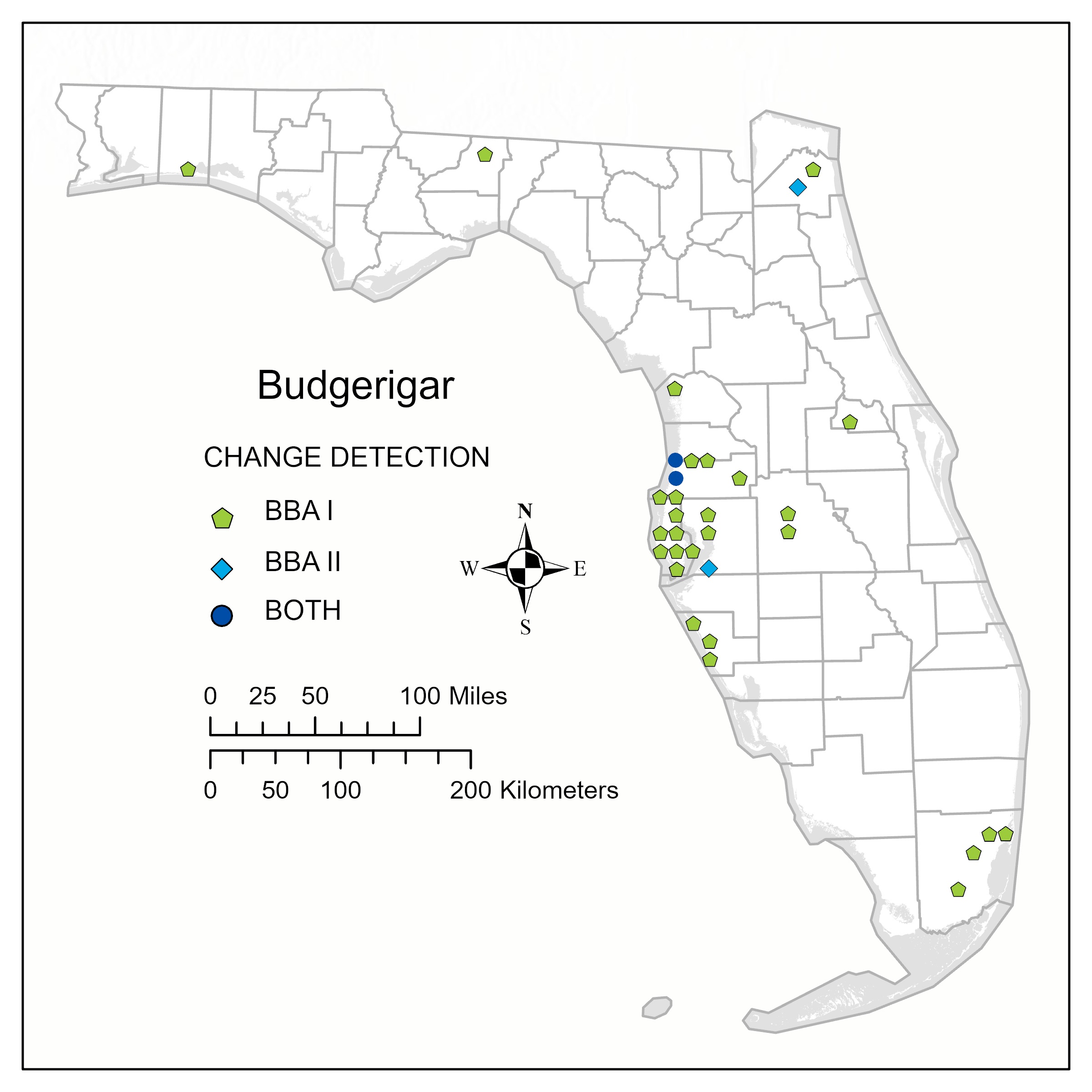Species Account
Budgerigars are endemic to Australia, where they are locally abundant. The most popular avian pet in the world, an estimated 240,000 individuals were imported into the US during 1925-1940. By the early 1960s, Budgerigars had established a non-migratory breeding population in the Tampa Bay region. By the late 1970s, they ranged along the Gulf coast about 100 miles, from Hudson (Pasco County) to Venice (Sarasota County) and numbered 20,000 or more individuals (Pranty 2001).
Based on a 1-year study at Holiday (Pasco County) in 1978 (Shapiro 1979), the breeding season was protracted; egg dates ranged from April through November. Twelve banded females monitored throughout the study laid 2-6 clutches each, with a mean of 3.7 clutches. Successful nests fledged 1-7 nestlings each, and earlier broods fledged more young than later broods (Shapiro 1979). Small numbers of Budgerigars were found in several other regions in Florida (see Figure 2), but these were short-lived and did not involve breeding. By the early 1980s, the Tampa Bay population had begun a severe decline, thought to be the result of nest site competition with House Sparrows (Pranty 2001).
Citation: Walters, M. J., and S. K. Robinson. 2024. Canada Goose (Branta canadensis). In A. B. Hodgson, editor. Florida Breeding Bird Atlas II. Special Publication Number 9. Florida Ornithological Society, Tampa, USA.
Banner Photograph: Alexander Lamoreaux
Illustration: Diane Pierce
On the inaugural Aripeka-Bayport CBC in 1991, a “colony” of 100 or more Budgerigars was discovered at Hernando Beach (Hernando County). Otherwise, the drastic decline of Budgerigars in Florida is well-documented using Christmas Bird Count (CBC) data. From 6,895 individuals during the 1977-1978 CBC season, Budgerigar numbers were reduced to 385 individuals by the 1987-1988 season (Pranty 2001, 2015b). CBC data show that the decline in the Tampa Bay population was severe, range-wide, and synchronous. Budgerigars became extirpated from the other counties in the Tampa Bay region in 1997 (Pinellas County), 1993 (Sarasota County), 1992 (Hillsborough County), and 1991 (Manatee County; Pranty 2015a). Only the populations in Pasco and Hernando counties survived to be documented during BBA II. Compared with the first atlas (Pranty 2003), the drastic range reduction is obvious. Other than single “possible” breeding reports at Jacksonville (Duval County) and the Ruskin area (Hillsborough County), which presumably refer to single escapees seen once, Budgerigars were limited during BBA II to one site each in the Port Richey quadrangle (Sea Ranch; Pasco County) and the Aripeka quadrangle (Hernando Beach; Hernando County), which represented their entire Florida range by the early 2000s (Pranty 2015a, b). Breeding was confirmed at each site, nesting in artificial cavities (boat davits and nest-boxes) in suburban yards. The Hudson and Hernando Beach populations numbered fewer than 100 individuals by the mid-1990s, but each persisted for more than 20 years. Coincidentally, the final Budgerigars at Hudson and Hernando Beach died out within days of each other in April 2014 (Pranty 2015b). Budgerigars continue to be found outside of captivity in Florida (e.g., eBird 2022), but these are escaped or released pets that do not persist; many are avicultural morphs in blue, yellow, or pied (mostly white and blue) plumages.
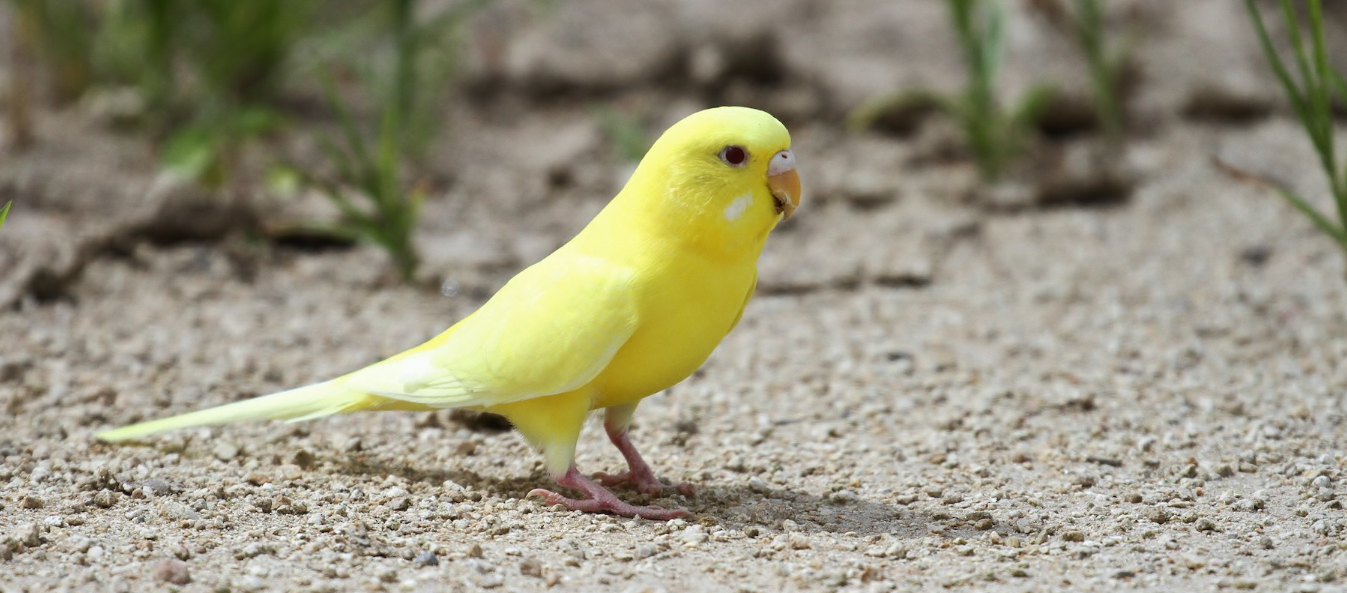
Data
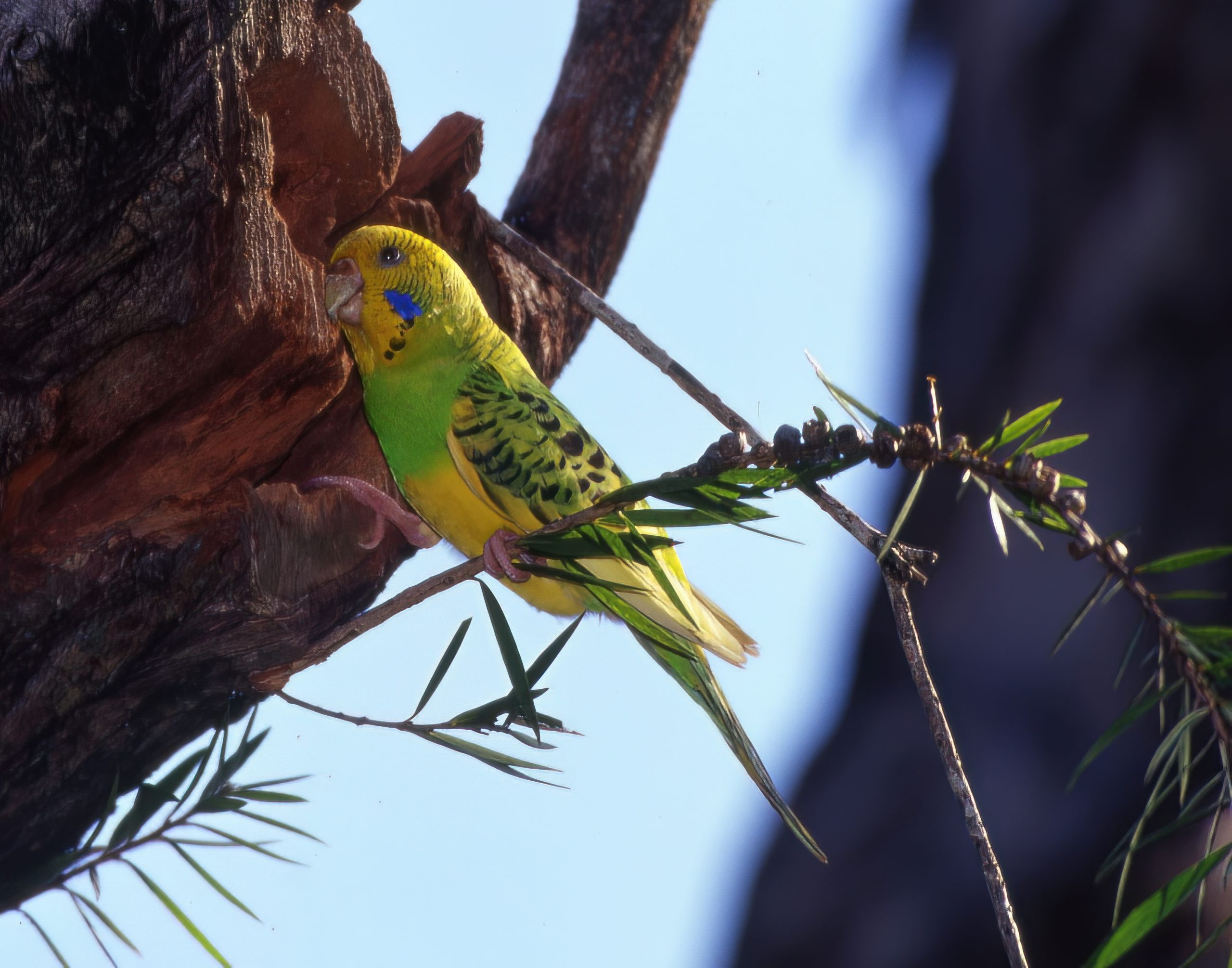
Table 1

Left Photo Credit: Larry Manfredi
Maps
Figure 1
Figure 1. Budgerigar quad-level distribution, Florida Breeding Bird Atlas II. Figures 1 and 2 are based on data collected across all six atlas blocks within a quad. Figure 1 is based on the highest breeding code observed in each quad.
Figure 2
Figure 2. Budgerigar quad-level change detection based on the simple presence or absence of a species at any breeding code level within the quad during each atlas.
References
eBird. 2022. eBird: An online database of bird distribution and abundance [web application]. eBird, Cornell Lab of Ornithology, Ithaca, New York. http://www.ebird.org/.
Pranty, B. 2001. The Budgerigar in Florida: Rise and fall of an exotic psittacid. North American Birds 55:389-397.
Pranty, B. 2003. Budgerigar (Melopsittacus undulatus). In Florida Fish and Wildlife Conservation Commission, editor. Florida’s breeding bird atlas: a collaborative study of Florida’s birdlife. Florida Fish and Wildlife Conservation Commission, Tallahassee, USA. https://myfwc.com/media/19655/bba_budg.pdf.
Pranty, B. 2015a. Extirpation of the Budgerigar (Melopsittacus undulatus) from Florida. Florida Field Naturalist 43:105-113.
Pranty, B. 2015b. The disappearance of the Budgerigar from the ABA Area. Birding 47(4):34-40.
Shapiro, A. E. 1979. Status, habitat utilization, and breeding biology of the feral Budgerigar (Melopsittacus undulatus) in Florida. Thesis, University of Florida, Gainesville, USA.

